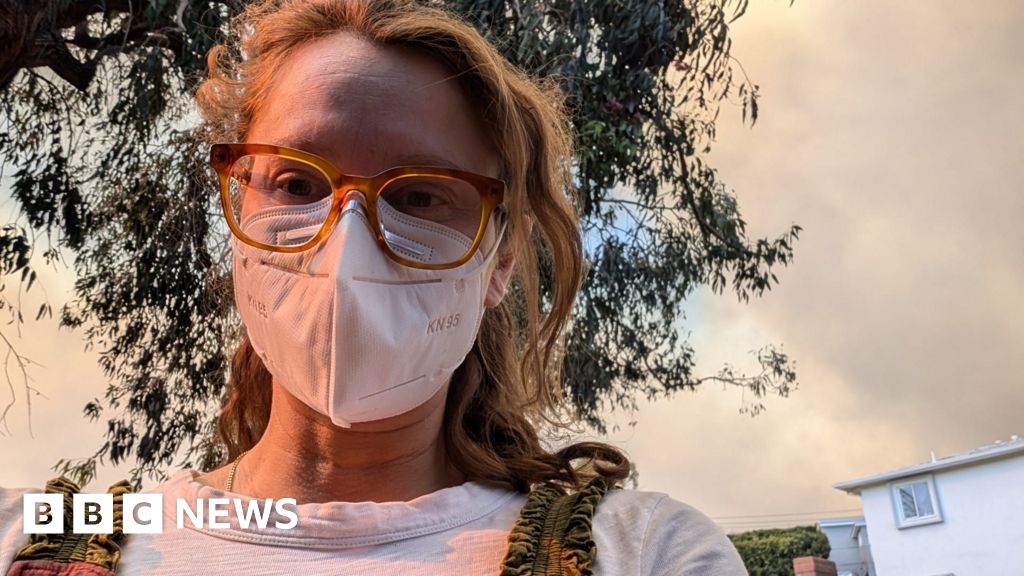
Fact Check: ‘I have nothing to go back to’ – LA fires heartbreak
At the request of one of our DBUNK subscribers, who submitted this article for fact-checking, here is our comprehensive analysis of the BBC piece titled “I have nothing to go back to’ – LA Fires Heartbreak,” published on 1/11/2025. Our subscriber raised an important and timely question: With all the warnings about extreme weather and wildfires, why wasn’t Los Angeles better prepared for this disaster? DBUNK is here to provide the clarity they deserve and uncover any potential misinformation, missing context, or bias within the article.
Analysis of the Article
The article, written in a vivid and emotional tone by Lucy Sherriff, details her first-hand experience with the devastating Los Angeles wildfires. While the narrative provides raw, impactful insight into the destruction caused by the fires, there are notable areas where context is lacking, and some elements could potentially misrepresent the situation to readers.

Missing Context: Disaster Preparedness and Warning Systems
Although the article vividly recounts the emotional turmoil of the fires, it leaves critical gaps in explaining why Los Angeles appeared unprepared for the scale of the disaster. For instance, the author points out, “I never received a message about any evacuations or fire warnings on that first terrible day.” This raises a significant question: why did the emergency notification systems fail for such a large-scale event? However, no effort is made to explore the systemic or logistical causes of this failure, leaving readers with an incomplete understanding of how local authorities and fire services handled the wildfire. Greater clarification on emergency resource allocation, preparedness measures, and communication channels would add much-needed context to this portion of the report.
LA has experienced heightened threats of wildfires in recent years due to climate change, which worsens drought conditions and fuels large-scale fires. However, no mention is made of whether city officials or fire departments had proactively planned to mitigate or respond to this particular fire season. Readers are left wondering whether issues like staffing shortages, outdated infrastructure, or climate-resilient urban planning practices played a role in the apparent breakdown.

Selective Details Lead to Potential Bias
While the article leans heavily on the author’s personal experiences—including the harrowing moments of escaping her burning neighborhood—it lacks a broader perspective by omitting how other areas of Los Angeles coped with the fire. For example, Lucy Sherriff mentions six active fires but primarily focuses on her own neighborhood and the Palisades Fire. This framing may unintentionally narrow the reader’s understanding of the full scope of the city’s struggles, leaving out voices and stories from other affected communities.
Furthermore, the article highlights the devastating effects of the fires without delving into recovery efforts or systemic policy changes. It’s a missed opportunity to inform readers about potential solutions or government accountability measures in response to extreme weather disasters, such as funding for firefighting equipment or sustainable urban planning.

Misinformation Check: “Historic Wildfire” Claim
The article describes the Palisades Fire as “a historic wildfire.” However, this classification warrants scrutiny. As of January 2025, California has unfortunately experienced numerous catastrophic wildfires in the past decade alone, many of which were record-breaking in terms of size and destruction. To label the Palisades Fire as historic may inadvertently mislead readers into thinking it was unprecedented when, in fact, wildfire experts may not use such terminology uniformly. Relying on official assessments from agencies like Cal Fire or NOAA is essential in validating claims like this.
Addressing the User’s Question: Why Wasn’t LA Better Prepared?
Several factors contribute to LA’s struggle to combat wildfires effectively:
- Climate Conditions: The combination of unusually high temperatures, persistent drought, and Santa Ana winds created conditions ripe for a devastating fire.
- Underfunded Resources: Despite annual warnings, fire departments across California often operate with limited funding and staffing, especially during peak fire seasons.
- Urban Expansion: The growing development of homes and businesses in wildfire-prone areas like the Palisades exacerbates risks, as these communities are difficult to defend during fast-moving fires.
- Communication Gaps: The lack of adequate early warnings—as reported by the author—has long been a challenge during California disasters. State and local governments are working to improve technological notifications through systems like Wireless Emergency Alerts (WEA), but gaps remain.
Ultimately, a combination of foreseen environmental factors, systemic funding challenges, and deficiencies in emergency response contributed to LA’s lack of preparedness. The article touches briefly on some of these issues but does not explore them in the depth warranted, leaving readers with more questions than answers.
Conclusion
While Lucy Sherriff’s article provides an emotionally compelling account of the devastation caused by the Los Angeles wildfires, it lacks critical context and fails to address systemic issues contributing to the disaster. Claims such as the “historic” nature of the Palisades Fire lack substantiation, and the failure of the city’s emergency alert system is mentioned without exploring possible reasons. For readers looking to understand the full picture—including why the city was underprepared—the article falls short in its journalistic responsibility.
DBUNK’s mission is to empower users with factual clarity. Stay informed and explore verified information available through our upcoming DBUNK app. Misinformation has lasting consequences, but together, we can uncover the truth.


